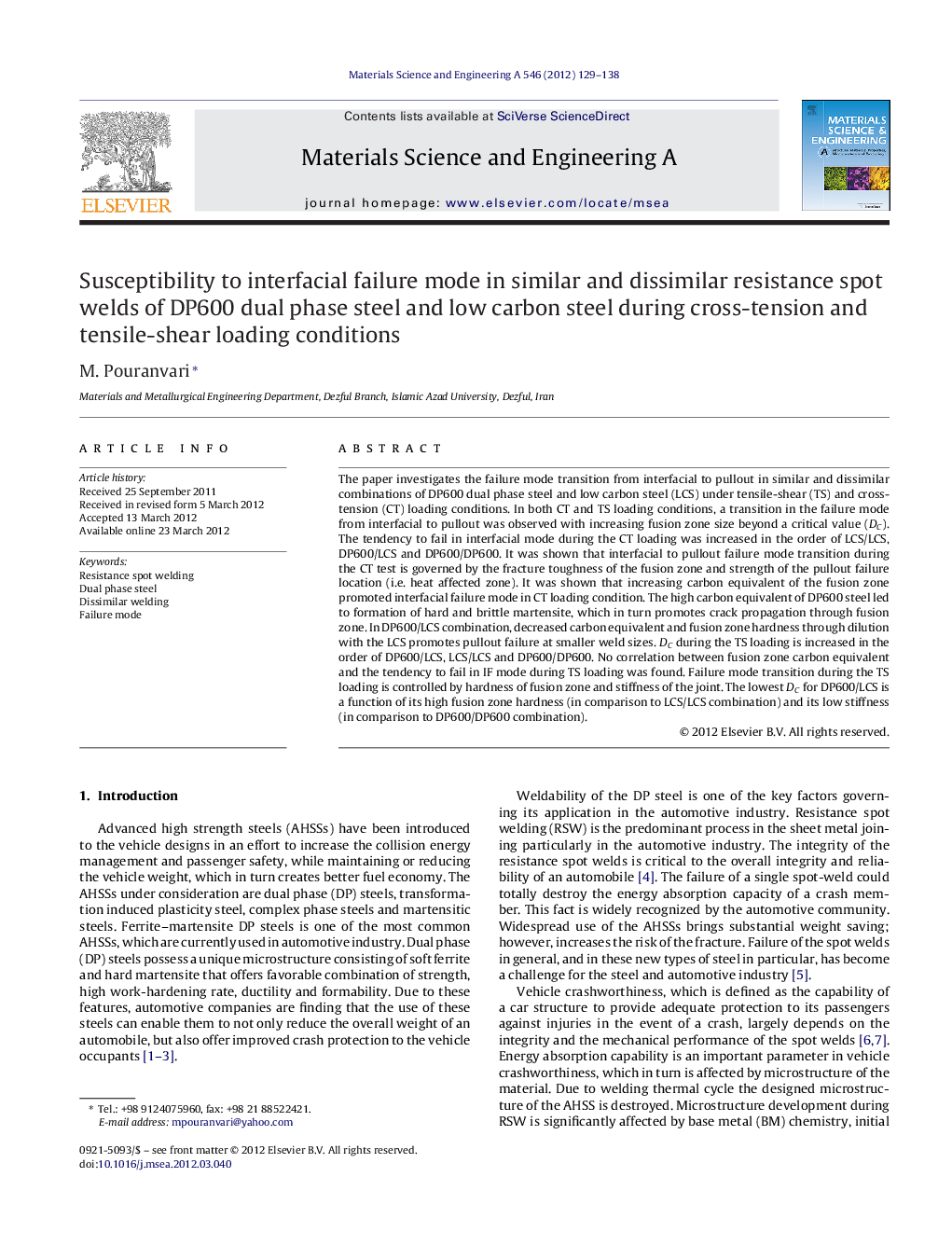| کد مقاله | کد نشریه | سال انتشار | مقاله انگلیسی | نسخه تمام متن |
|---|---|---|---|---|
| 1577280 | 1514797 | 2012 | 10 صفحه PDF | دانلود رایگان |

The paper investigates the failure mode transition from interfacial to pullout in similar and dissimilar combinations of DP600 dual phase steel and low carbon steel (LCS) under tensile-shear (TS) and cross-tension (CT) loading conditions. In both CT and TS loading conditions, a transition in the failure mode from interfacial to pullout was observed with increasing fusion zone size beyond a critical value (DC). The tendency to fail in interfacial mode during the CT loading was increased in the order of LCS/LCS, DP600/LCS and DP600/DP600. It was shown that interfacial to pullout failure mode transition during the CT test is governed by the fracture toughness of the fusion zone and strength of the pullout failure location (i.e. heat affected zone). It was shown that increasing carbon equivalent of the fusion zone promoted interfacial failure mode in CT loading condition. The high carbon equivalent of DP600 steel led to formation of hard and brittle martensite, which in turn promotes crack propagation through fusion zone. In DP600/LCS combination, decreased carbon equivalent and fusion zone hardness through dilution with the LCS promotes pullout failure at smaller weld sizes. DC during the TS loading is increased in the order of DP600/LCS, LCS/LCS and DP600/DP600. No correlation between fusion zone carbon equivalent and the tendency to fail in IF mode during TS loading was found. Failure mode transition during the TS loading is controlled by hardness of fusion zone and stiffness of the joint. The lowest DC for DP600/LCS is a function of its high fusion zone hardness (in comparison to LCS/LCS combination) and its low stiffness (in comparison to DP600/DP600 combination).
► IF to PF failure mode transition behavior for similar and dissimilar DP600 and LCS spot welds.
► Failure mode transition during TS loading is controlled by FZ hardness and stiffness of the join.
► Failure mode transition during CT loading is controlled by FZ fracture toughness and HAZ strength.
► DP600/LCS exhibits the lowest tendency to fail in IF mode in TS loading.
► DP600/DP600 exhibits the highest tendency to fail in IF mode in CT loading
Journal: Materials Science and Engineering: A - Volume 546, 1 June 2012, Pages 129–138